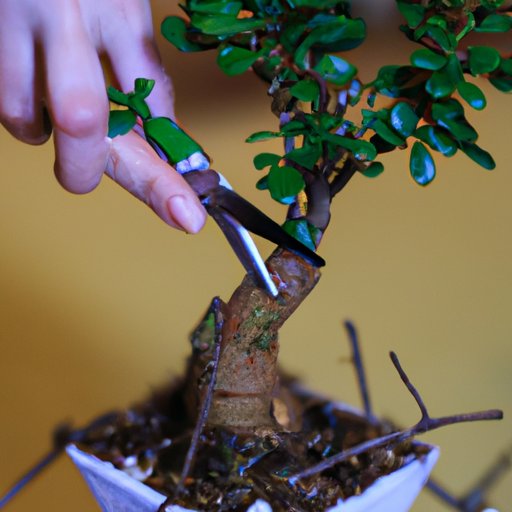Introduction
Bonsai trees are miniature trees grown in containers. They are trained and pruned to create an aesthetically pleasing shape. Although they are small, they require significant effort to maintain. With proper care and attention, your bonsai tree can last for many years. Here are some tips on how to take care of a bonsai tree at home.
Research the Type of Bonsai Tree You Have
There are several different types of bonsai trees, each with its own unique characteristics. It is important to identify the type of tree you have so that you can provide it with the appropriate care. Some common types of bonsai trees include junipers, pines, maples, and elms.
The easiest way to identify your bonsai tree is by looking at the leaves and needles. Juniper trees have scale-like leaves, while pine trees have needles. Maple trees have lobed leaves, and elm trees have serrated leaves. Knowing the type of tree will help you determine the best care regimen.
Provide Adequate Light
Bonsai trees need plenty of light to stay healthy and grow. The amount of light needed depends on the type of tree, but most bonsai trees prefer bright indirect sunlight. When selecting a location for your bonsai tree, make sure it receives at least 4-6 hours of direct sunlight each day.
If you don’t have access to natural sunlight, you can use grow lights to supplement the light your bonsai tree receives. Grow lights provide a full spectrum of light that helps keep your bonsai tree healthy and vibrant.
Water Regularly
Bonsai trees need to be watered regularly to stay healthy. The amount of water needed depends on the type of tree, the size of the pot, and the temperature and humidity of the environment. Generally, you should water your bonsai tree until the soil is saturated, then allow it to dry out before watering again.
It’s also important to water your bonsai tree on a regular schedule. Most bonsai trees should be watered every 2-3 days, but this can vary depending on the type of tree and environmental conditions. Monitor your bonsai tree closely and adjust your watering schedule accordingly.
Prune Carefully
Pruning is an important part of bonsai tree care. Pruning helps maintain the desired shape of the tree and encourages new growth. When pruning your bonsai tree, you should use sharp, clean tools such as scissors or clippers. Be sure to follow the natural shape of the tree when pruning.
It is also important to prune your bonsai tree on a regular basis. Generally, it’s best to prune your bonsai tree once a month during the growing season. This will keep it healthy and help encourage new growth.
Fertilize Appropriately
Fertilizing your bonsai tree is essential for healthy growth. Different types of bonsai trees require different types of fertilizer, so it’s important to research the type of tree you have and select the appropriate fertilizer. Generally, liquid fertilizer is recommended for bonsai trees.
When applying fertilizer, it’s important to follow the instructions on the package. Fertilizer should be applied every two weeks during the growing season, and less frequently during the dormant season. Too much fertilizer can burn the roots of your bonsai tree, so it’s important to be careful.
Repot When Necessary
Bonsai trees should be repotted every few years to ensure they remain healthy. Repotting provides the tree with fresh soil and allows the roots to spread out and receive more nutrients. When repotting your bonsai tree, be sure to use a well-draining soil and a shallow pot.
The timing of repotting will depend on the type of tree and the age of the tree. Generally, most bonsai trees should be repotted every 2-3 years. If your bonsai tree looks unhealthy or is not growing as quickly as it should, it may need to be repotted sooner.
Conclusion
With proper care and attention, your bonsai tree can thrive for many years. Make sure to research the type of tree you have and provide adequate light, water regularly, prune carefully, fertilize appropriately, and repot when necessary. With these tips, you can keep your bonsai tree healthy and happy.
(Note: Is this article not meeting your expectations? Do you have knowledge or insights to share? Unlock new opportunities and expand your reach by joining our authors team. Click Registration to join us and share your expertise with our readers.)
